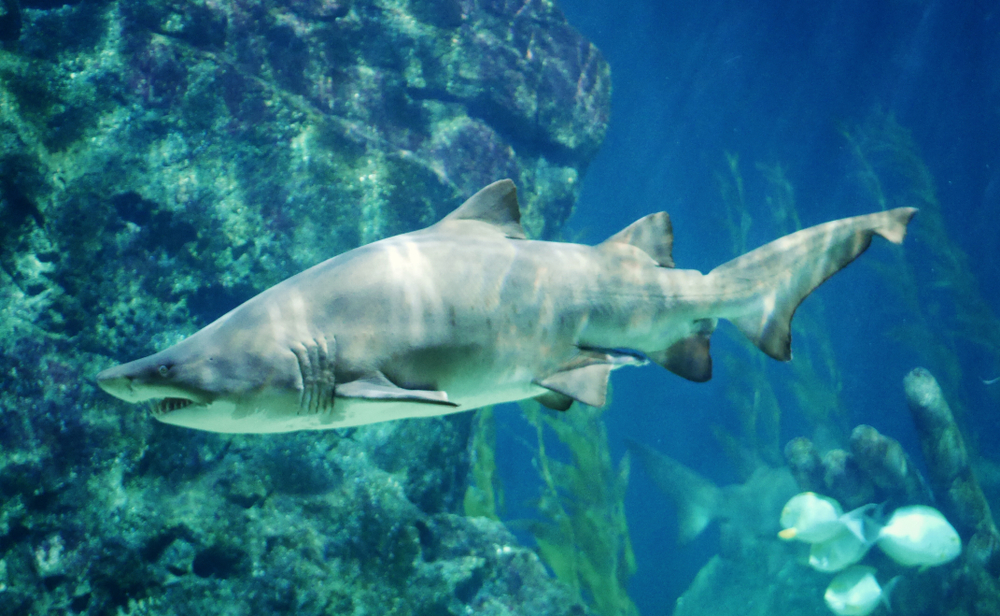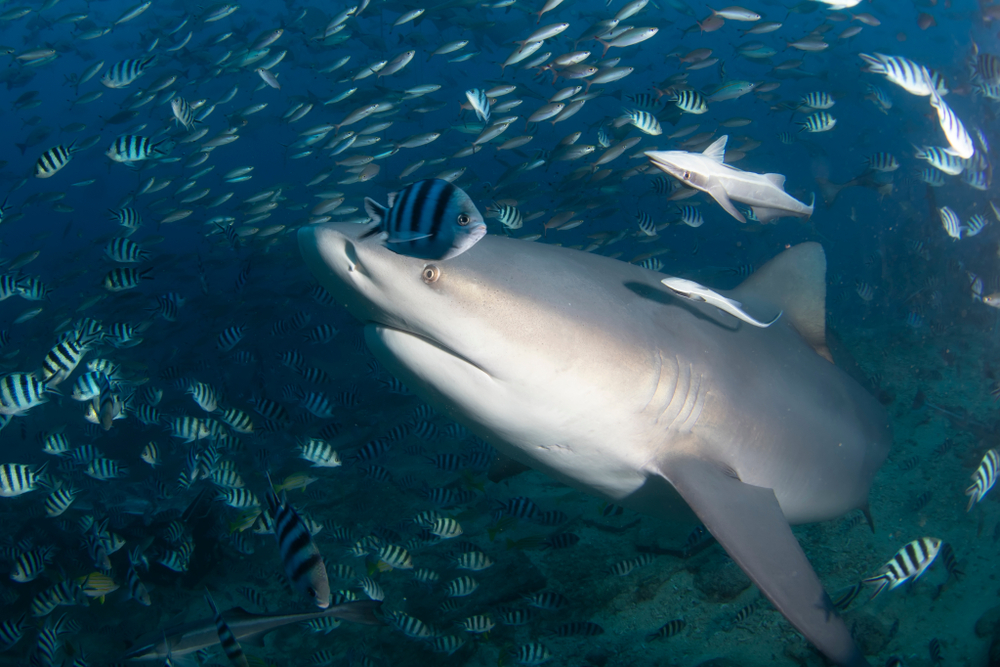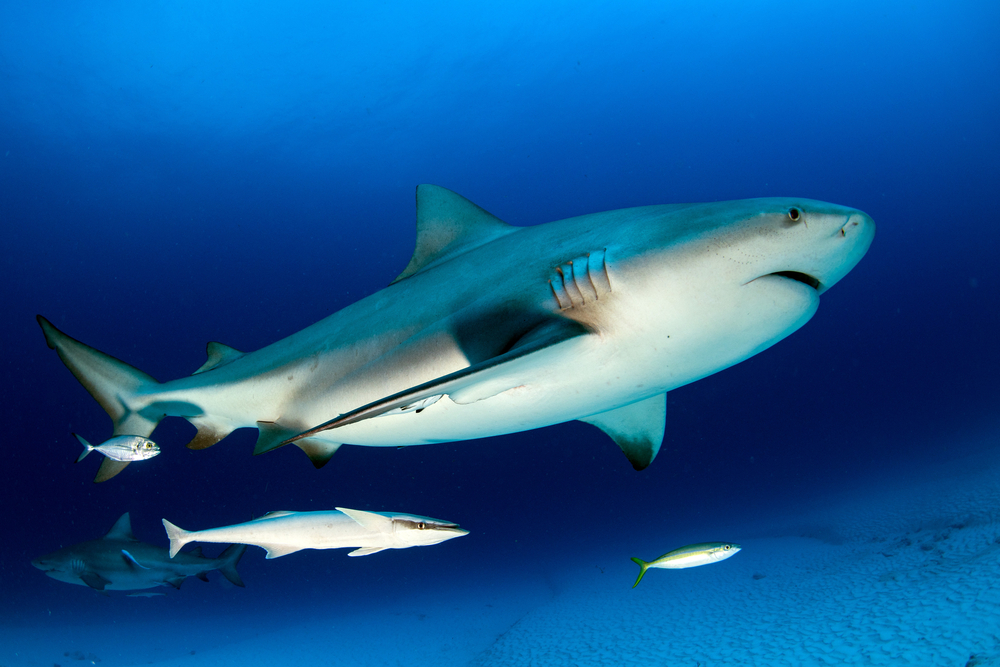Bull sharks and great white sharks are two distinct species of sharks, each with its unique characteristics. Here are some of the key differences between them:
- Physical Appearance:
- Great White Shark: Great white sharks are larger and more massive than bull sharks. They have a conical, pointed snout and a prominent, triangular dorsal fin.
- Bull Shark: Bull sharks are typically smaller and more robust than great whites. They have a shorter, broader snout and a less pronounced dorsal fin.
- Coloration:
- Great White Shark: Great whites are usually grayish or bluish-gray on their upper side, which helps them blend in with the open ocean.
- Bull Shark: Bull sharks tend to be light to dark gray on top, and their coloration can vary depending on their age and environment.
- Habitat:
- Great White Shark: Great white sharks are primarily found in coastal areas, often in open ocean and near seal colonies.
- Bull Shark: Bull sharks are known for their ability to inhabit both saltwater and freshwater environments. They can be found in rivers and are sometimes referred to as “river sharks.”
- Diet:
- Great White Shark: Great white sharks are apex predators and primarily feed on marine mammals like seals and sea lions. They also eat fish and sometimes scavenged carrion.
- Bull Shark: Bull sharks have a more varied diet, which can include fish, rays, turtles, and other sharks. They are opportunistic hunters and adapt to the available prey in their environment.
- Behavior:
- Great White Shark: Great white sharks are known for their long-distance migrations, with some individuals traveling thousands of miles. They are solitary creatures but may engage in social interactions.
- Bull Shark: Bull sharks are known for their ability to tolerate freshwater and are more commonly found in rivers, estuaries, and nearshore areas. They tend to be less migratory than great white sharks.
- Aggressiveness:
- Great White Shark: While great white sharks have a reputation as fearsome predators, they are not typically aggressive toward humans and often engage in “test bites” before deciding whether a human is their prey.
- Bull Shark: Bull sharks are more likely to be aggressive and are responsible for a significant proportion of shark attacks on humans. Their presence in both saltwater and freshwater environments can increase the likelihood of interactions with people.
These differences reflect the unique adaptations of these two shark species to their respective habitats and lifestyles. While both are formidable predators, their behaviors, appearances, and ecological roles set them apart.








































































